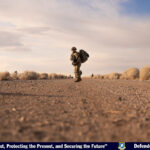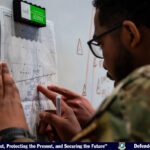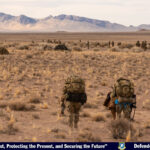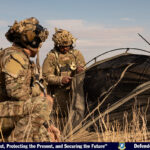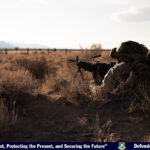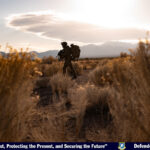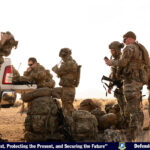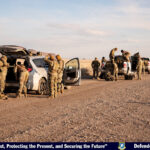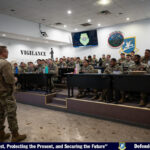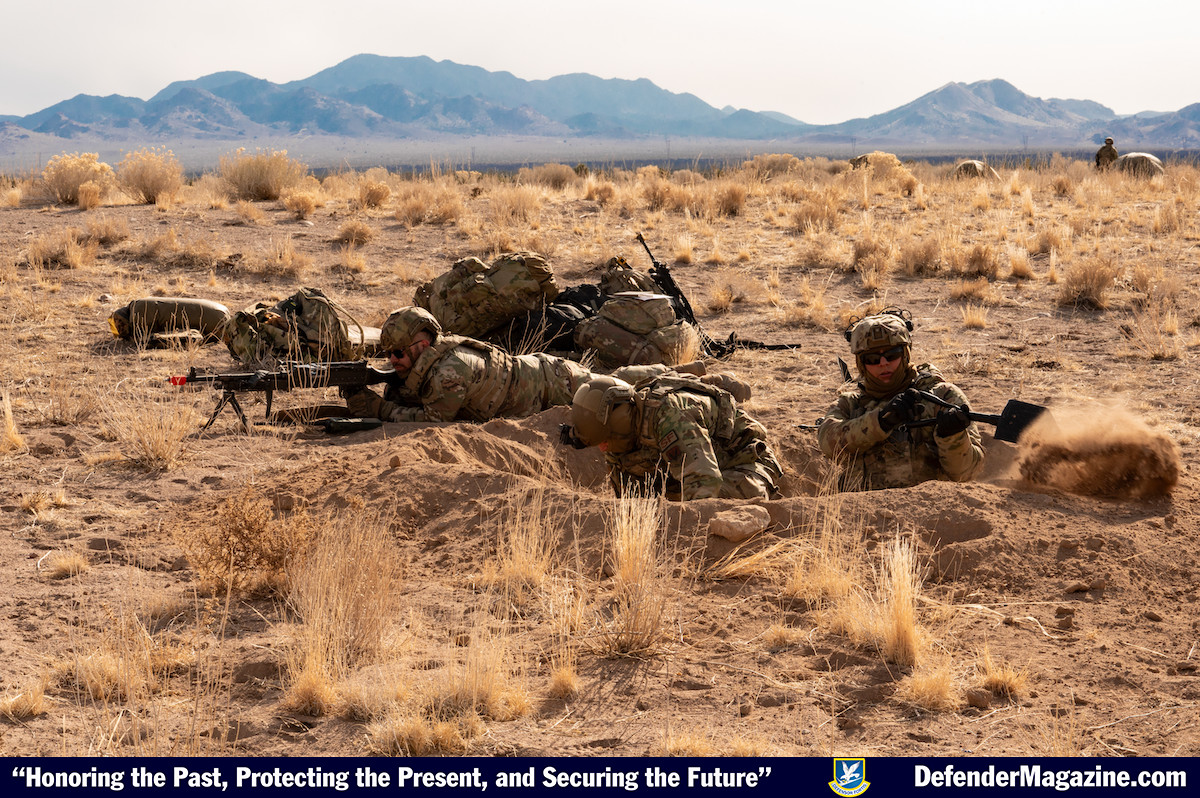
LAUGHLIN AIR FORCE BASE, Texas — Airmen from the 47th Flying Training Wing Airmen played a critical role in planning, coordinating and overseeing key aspects of mission execution in a large-scale exercise at Red Flag 25-1 at Nellis Air Force Base, Nevada, Jan. 12 to Feb. 8.
Red Flag exercises are combat trainings designed to provide aircrews with realistic combat scenarios in contested environments, testing warfighters’ ability to execute complex missions under simulated wartime conditions.
“The Weapons and Tactics community plays a vital role in shaping tactics techniques and procedures (TTPs) for the Security Forces Enterprise, with Red Flag-Nellis serving as a key platform for integrating our efforts with mission partners,” said Senior Master Sgt. Richard Morris Jr. 47th Security Forces Squadron senior enlisted leader. “As the lead planner, it was humbling to provide members of the 47th FTW an opportunity to experience the strategic vision and how combat air forces strengthen readiness.”
The Weapons and Tactics community, consisting of security forces specialists trained in operational strategy and execution, is leading an Air Force Security Forces Center initiative to validate and enhance deployment capabilities while integrating battlefield strategies with mission partners. The Air Force Security Forces Center develops and oversees security forces doctrine, policy and training initiatives to ensure Airmen are prepared for contested environments.
The exercise tested Defender’s ability to secure key assets in a contested environment by simulating real-world threats and operational challenges.
Laughlin’s personnel played a key role in mission execution, providing planning and operational support across security forces, manpower, public affairs and medical.
While Laughlin’s primary mission is training combat-ready Airmen, leaders and pilots, Red Flag offered an opportunity to expand their skills beyond our typical training scope.
“The most rewarding aspect of Red Flag is knowing we are strengthening our career field by giving Defenders a venue to sharpen their combat skills,” said Morris.
Laughlin personnel joined organizers and supported the exercise’s two opposing forces: defensive forces deemed BLUEFOR, and offensive forces deemed REDFOR.
“The days of the KC-135 [Stratotanker] running racetracks and refueling aircraft are gone,” said Maj. Richard Cordova, Chief of Security Forces Weapons and Tactics. “Defenders will be on the front lines, ensuring aircraft can land, refuel and return to the fight. This isn’t just an exercise – it’s preparation for the real thing.”
Organizers designed the exercise to refine TTPs while testing sustainability and decision-making under pressure.
Over the course of 72-hour vulnerable windows, BLUEFOR maintained security at a contingency location while operating independently and protecting critical infrastructure.
“From an operational perspective we’re ensuring that all logistics, personnel movement, and sustainment planning align with our mission,” said Master Sgt. Terence Fortson, 91st Security Forces Group section chief of Weapons and Tactics. “We analyze everything from rations and sustainability to the concept of operations and maneuvering strategies. We want to ensure our Defenders have the resources they need to be effective in a contested environment.”
This iteration of Red Flag emphasized strategic patience, sustainability and critical decision-making.
Organizers designed scenarios that forced Defenders to think ahead, ration supplies and adjust defensive postures before engaging adversaries.
“We’re trying to teach our Defenders what sustainability actually means,” said Fortson. “Sometimes that means preparing to go to a location, hunker down and wait for something to happen. The challenging part is taking it slow as opposed to constantly doing something for the exercise. The Defenders have time to critically think and make appropriate decisions before REDFOR attacks.”
Organizers utilized Task Performance Checklists and Mission Essential Tasks to measure how effectively Defenders secured their areas, conducted reconnaissance and managed resources.
Red Flag’s realism was enhanced by the inclusion of organic REDFOR adversaries. Unlike traditional exercises with pre-planned attack timelines, REDFOR operated with autonomy to plan, locate and engage BLUEFOR; forcing Defenders to react in real-time tactical engagements.
“What makes Red Flag unique is the ability to go out and see if we can hold a contested environment for a sustained period of time while making sure that we get combat air power out to the forward edge,” said Master Sgt. Malcolm Stephen, 435th Air Ground Operations Wing A9 superintendent.
Teamwork was a critical factor in mission success at all levels. Defenders worked closely with one another to ensure seamless communication and execution throughout the exercise. Collaboration played a pivotal role in securing perimeters, responding to simulated threats, setting up a base camp and achieving additional mission objectives.
“One thing we’re trying to hit home is teamwork, teamwork, teamwork,” Fortson emphasized. “If you can’t rely on your teammates, the mission is going to be significantly harder to execute. From a leader and follower standpoint.”
Airmen demonstrated adaptability, resilience and problem solving in high stress conditions as the exercise progressed.
“My biggest takeaway has been watching everyone come together, whether it’s their job or not, and helping out,” said Stephen. “They’re excited to test combat capability and adjust on the fly. They’re showing us that even though Security Forces is not what it used to be, it’s changing in a better direction and that we’re going to be all right as long as we keep up the effort, positivity and lean forward into challenges.”
- Published
- By Senior Airman Keira Rossman
- 47th Flying Training Wing Public Affairs
